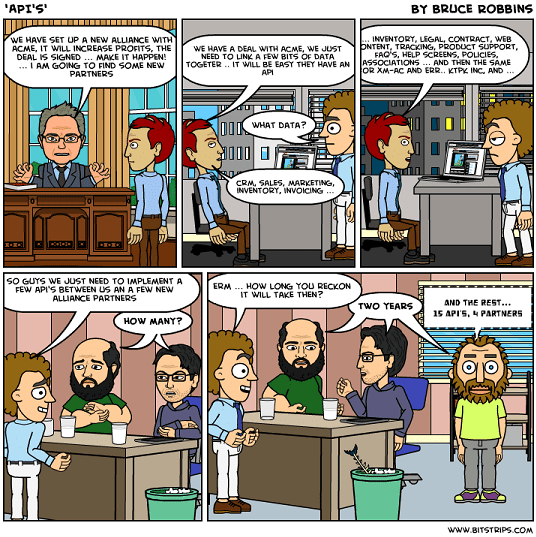CIO recently published an article that highlighted a survey that was revealing. The survey, conducted in April and May, included 150 executives, from large companies of over 5,000 employees, with responsibility for making business decisions influenced by big data. The survey reports that 98 percent said their company encourages its employees to ground business decisions in data and evidence (60 percent said their company ‘strongly encouraged’ the practice; 38 percent said their company ‘somewhat encouraged’ it). This sounds consistent with current thinking and best practices for the adoption of analytics to make better business decisions and as a survey finding, isn’t particularly unexpected .
However, what was interesting was this same survey found that just 23% of respondents felt their company is ‘extremely successful’ and 39% ‘very successful’ at actually leveraging big data to make decisions.
Could this be indicative of the state of big data efforts? In other words, while we are on the right road, for many of us there remains the fact that we haven’t fully reached the hoped for destination.
Our ability to consistently reach the full potential of data analytics is hampered, according to California-based Ventana Research, because a majority of organizations do not have enough experience in applying analytics to business problems and lack training on using the tools. Ventana notes that it undertook benchmark research (PDF) last year to determine the attitudes, requirements and future plans of companies that use predictive analytics and to identify the best practices of organizations that are most proficient in it. The researchers found that predictive analytics findings are most commonly used for forecasting (used by 56% of respondents), marketing analysis (46%), customer service (41%) and product recommendations or offers (35%).
The primary barrier for taking predictive analytics use to the next level, believes Ventana, are issues of expertise and training; critical considerations in adopting and using predictive analytics effectively. Most often, people primarily responsible for designing and deploying predictive analytics are data scientists (in 31% of organizations), followed by the business intelligence and data warehouse team (27%). Yet in only about half (52%) of the organizations are the people who design and deploy predictive analytics the same ones who utilize the output of the predictive analytics processes. The most common reasons that users don’t design analyses themselves are because they don’t have enough skill training (79%) and don’t understand the mathematics involved (66%).
Another possible barrier to greater success in using predictive analytics, the Ventana research found, is that more than half (52%) of organizations lack the resources they’d need to change the way they use predictive analytics, and nearly as many (48%) lack awareness of the need for changes. One-third said that the business case is not strong enough, and 29 percent said too much training or customized skill would be required.
These barriers do not seem to be halting the progression of data analytics spending however. The desire to leverage big data to make better business decisions is an accepted best practice today. International Data Corporation (IDC), expects worldwide revenues for big data and business analytics to grow from nearly $122 billion in 2015 to more than $187 billion in 2019, an increase of more than 50% over the five-year forecast period.
Cultivating what Gartner research director Alexander Linden termed “citizen data scientists” may be the answer. These are not data scientists. Linden has stated that there isn’t enough data scientists in the workforce, and expert data scientists will remain rare. Linden believes organizations need to start seeking out “citizen data scientists” — people on the business side — that may have some data skills, possibly with a math or even social science degree—and ask them to work, explore and analyze data. Gartner predicts that there will be five times as many citizen data scientists than expert data scientists going forward. As more analytic tools become easier to use, this new breed of data practitioner could become an invaluable part of your data analytics team.
DSC Resources
- Career: Training | Books | Cheat Sheet | Apprenticeship | Certification | Salary Surveys | Jobs
- Knowledge: Research | Competitions | Webinars | Our Book | Members Only | Search DSC
- Buzz: Business News | Announcements | Events | RSS Feeds
- Misc: Top Links | Code Snippets | External Resources | Best Blogs | Subscribe | For Bloggers
Additional Reading
- What statisticians think about data scientists
- Data Science Compared to 16 Analytic Disciplines
- 10 types of data scientists
- 91 job interview questions for data scientists
- 50 Questions to Test True Data Science Knowledge
- 24 Uses of Statistical Modeling
- 21 data science systems used by Amazon to operate its business
- Top 20 Big Data Experts to Follow (Includes Scoring Algorithm)
- 5 Data Science Leaders Share their Predictions for 2016 and Beyond
- 50 Articles about Hadoop and Related Topics
- 10 Modern Statistical Concepts Discovered by Data Scientists
- Top data science keywords on DSC
- 4 easy steps to becoming a data scientist
- 22 tips for better data science
- How to detect spurious correlations, and how to find the real ones
- 17 short tutorials all data scientists should read (and practice)
- High versus low-level data science
Follow us on Twitter: @DataScienceCtrl | @AnalyticBridge

